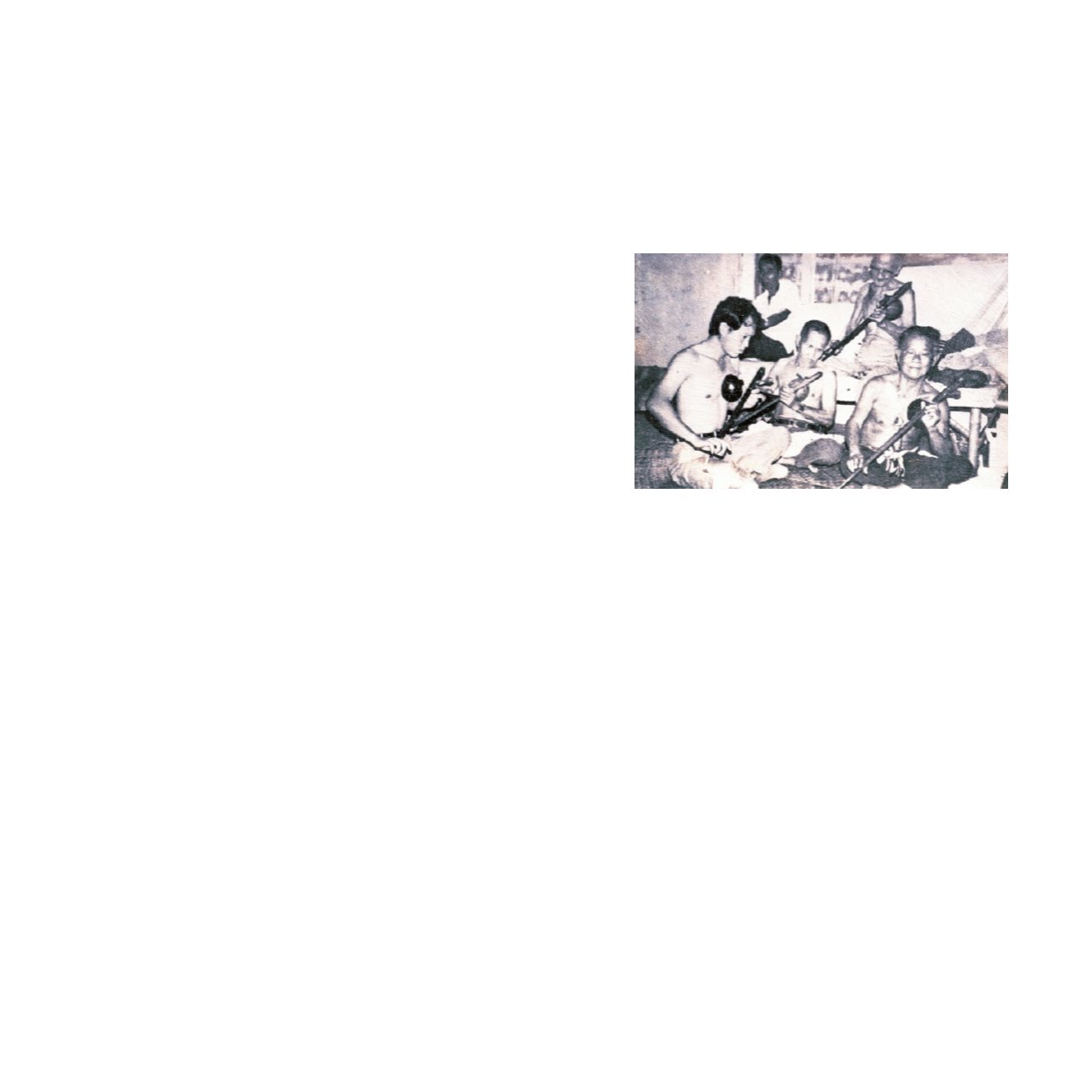

64
|
Culture Ways of Life and Wisdom
Phin Pia
The Stringed Instrument of Lanna
Among the supreme music instruments of Lanna,
“Phin Pia”
is considered
as a unique lute by the resonance and pitch sound of the instrument placed on the
bare chest or abdomen of the instrumentalist. The sound brings peaceful feelings
to listeners to dive deep into the magical melody.
The history of Phin Pia can be traced back to Indian people’s music instruments,
in the family of Wina or Phin. The word Pia is differently pronounced by each locality.
It can be Phia, Phlia, Phin Phia or Phin Pia.
The identity of Phin Pia is at its structure, comprising the head or skull made
of half coconut shell or gourd. Its fingerboard is made of long and round Kaen wood.
The length measured from the top end to the bottom is about 70-80 centimeters.
Wood used for making the tail (fingerboard) is hardwood such as Padauk wood,
Rosewood, Redwood, Ebony wood. At the peg box, covered on the top with bronze
or brass Hasadiling bird (elephant headed bird), Naga, peacock, or elephant. The
pegs are attached to the strings, from 2 to 7 strings.
The charm of Phin Pia is not only about its gorgeous appearance, but also the
technique and expertise of the instrumentalist in flicking the Phin Pia properly. The
method to play Phin Pia is similar to that of other lutes. The left hand presses the
strings on the fingerboard and holds the tail against the body of the instrumentalist,
while fingers of the right hand sweeps, touches and releases the strings of Phin Pia
to create a beautiful sound. Music tones can be adjusted as desired, in association
with the control of opening and closing Phin Pia’s head attached to the muscles
of chest or abdomen.
In the past, Phin Pia was popularly played exclusively in the Northern royal
court. Later, the popularity spread to a community of well-off people and skillful folk
musicians. Phin Pia players are highly regarded in the society as the head of Phin
Pia, an important component of the instrument, is rare and expensive. It is also
difficult to play the instrument despite its beautifully melodic sound. Young men of
Lanna in the past tried to play Phin Pia over other types of instruments in order to
take the advantage in courting girls at night.
“
It is assumed that the name
“Phin Pia” comes from
the past when Lanna
people called it “Pia”
in short, literally meaning
show-off or match (in the
Northern language). Therefore,
Phin Pia instrumentalists
look more charming than the
players of Salor, Sor, Sueng
and it became a competition
itself.
”
• For the technique of playing Phin Pia, instrumentalists must cover
the head on their chest and flick the strings with a specific technique
called “Pok” by using a little finger or a ring finger. Then finger bases
are used to touch the strings to make loud, clear and resonant
sound, like a pitch from a bell.


















